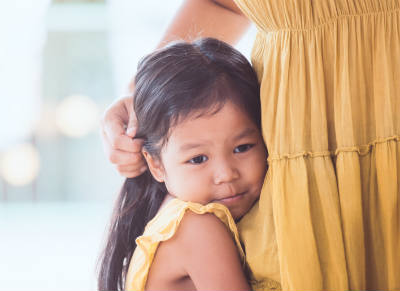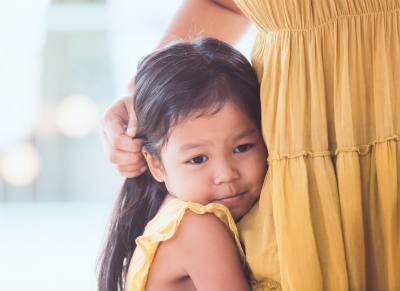Signs of anxiety in children vary by child, and you might be surprised at some of its symptoms. The most obvious sign of anxiety in children, according to AnxiousTodders.com, is fears and phobias. They can range from being afraid of the dark to fears about bugs or birds, of monsters —or even of being flushed down the toilet.
Other signs of childhood anxiety include rigidity in routine and/or sensitivity to noises and/or clothing. If your child doesn’t want to get his or her hands dirty and/or insists upon rituals such as having food cut up in certain ways or stuffed animals lined up in bed the exact same way each night, these could also be signs of childhood anxiety.
If your child is an exceptionally picky eater, insists upon following you no matter where you go in the house or struggles to fall asleep, these can be signs of an anxious child, as well. Anxiety can also be exhibited in social situations, where your child is fearful of strangers or becomes nervous in crowds. Understood.org says this about social anxiety in children: “If you force her to go on a playdate or to a party, she may cry or throw a tantrum. She may be very shy around strangers and avoid playing with classmates.”
The good news, according to the article, is that the earlier you detect these signs, the sooner you can begin to help your child build up resiliency and otherwise cope with situations.
Scholastic.com differentiates between normal anxiety behaviors and ones that are more significant. Normal behaviors include worrying over an upcoming test, along with keeping a reasonable eye out for dogs or bees. It’s normal to want to be tucked into bed at night and to be cautious during the first 30 minutes or so of a party.
But, if stress causes your child to throw up, lose sleep or cry, then that’s a red flag. So is when your child is afraid to go outside, in case he or she gets stung by a bee or attacked by a dog; refuses to go to parties or clings to your side if he or she becomes involved in social situations; and/or ends up in your bed every night.
Successfully Dealing with an Anxious Child
When your child is anxious, it’s important that you stay calm. Show empathy, letting your child know that feeling anxious sometimes is normal and sharing examples of when you felt anxious as a child. Also, break down challenges into small steps to help your child manage them, perhaps by checking in with your child every few minutes if he or she is afraid to fall asleep. Slowly extend the time between check-ins as your child learns to be calmer at bedtime.
Parents.com offers more tips, including an exercise titled The Four Doors. Simply have your child imagine four doors, with a fun thing behind each one. They could include, depending upon how your child defines fun, “a party, a family vacation, a favorite celebrity, or even a candy factory.” Let your child know that he or she can choose a door and enjoy thinking about what’s behind it. This can be especially helpful as part of bedtime routines.
One child described in the article finds that “anxiety melts away when she acts and sings.” Another child may find that reading or coloring helps. The bottom line is that, typically, with “patience, work, and loving support from their parents, kids can find a way to finally feel secure and make the bad thoughts go away.”
If you can’t help your child deal with anxiety, consult with your pediatrician. He or she will likely have more suggestions.



